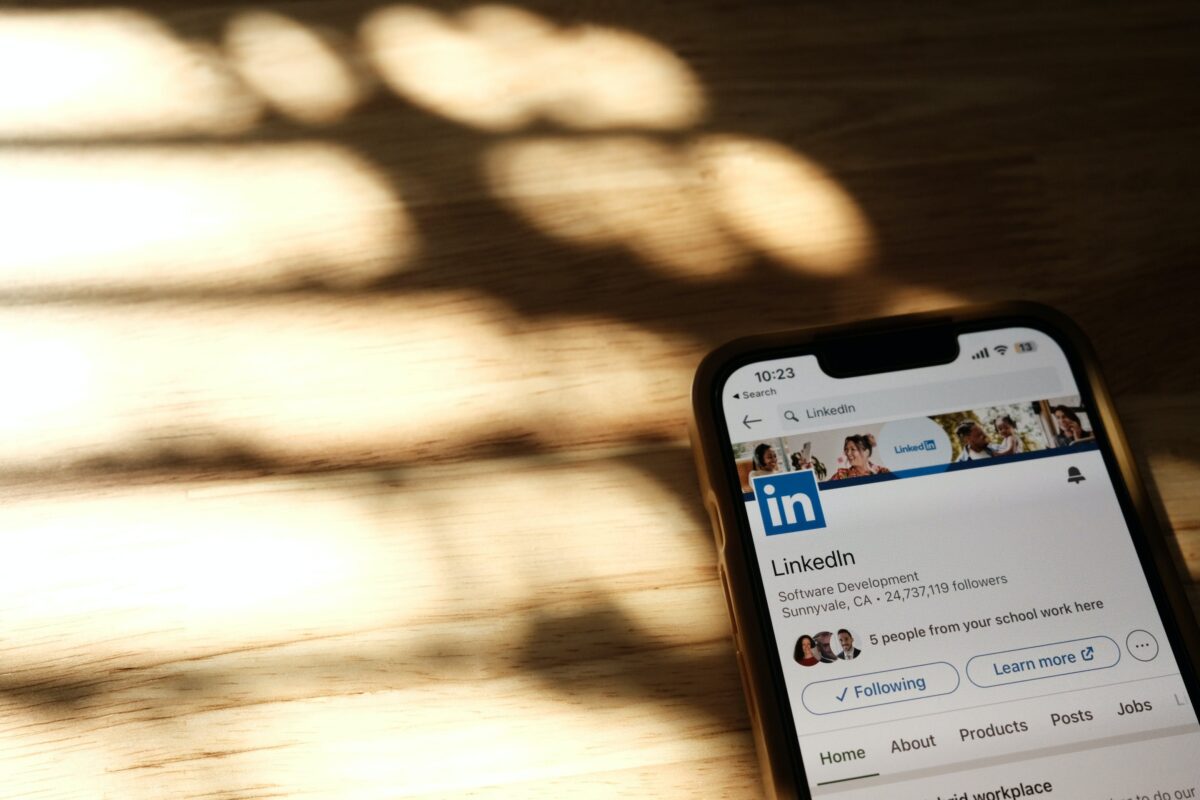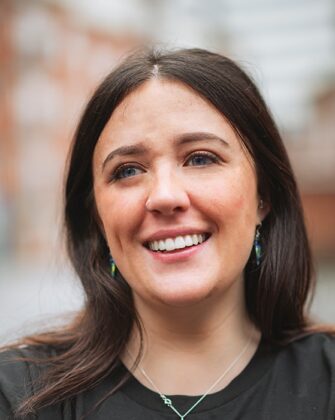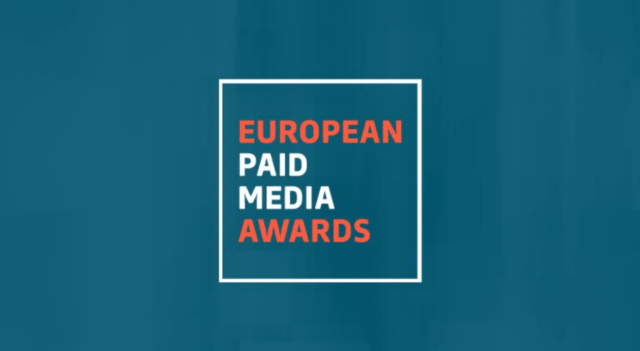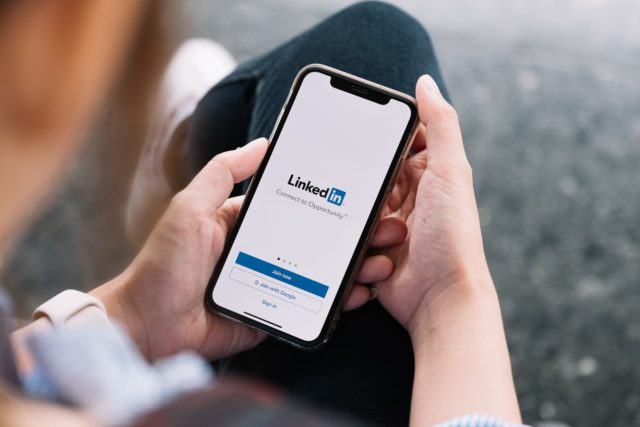Last week, we attended LinkedIn’s Executive Circle Conference, where we heard from leaders at LinkedIn who provided insights into what content works on the platform, how to make your brand campaigns more successful, and how to improve reporting cycles on the platform.
The conference uncovered a few common themes affecting the way brand content performs on the platform; here’s our team’s summary of everything that the day covered:
- Brand to demand: brand awareness needs an equal amount of investment as demand if brands want to see long-term success
- Video is overwhelmingly the most impactful medium for capturing attention and for driving brand recall – brands that use video to drive an emotion are the most successful
- Brands often focus their reporting too much on the short-term impact; brands need to strive to report more effectively on ROI which remains one of the most important metrics for CEOs
Talk 1: Brand to demand
While brand marketing can take time (on average taking between two to two-and-a-half years to gain impact on a similar level to demand generation), Lead Client Solutions Managers, Tori Allison and Anita Francisit, shared why it’s certainly worth investing in for the long run.
While demand generation captures the 5% “in market” who are ready to buy, brand advertising captures the 95% who aren’t currently in the market, but are likely to have an understanding and recall of your brand when they’re ready to buy.
Targeting broader audiences can assist with reaching future buyers and increase share of voice.
Key takeaways:
- Tori and Anita shared that a large majority of companies aren’t running brand campaigns for long enough to see any real impact, with 75% of brands running brand campaigns for six months or less – not nearly enough time to create reputable saliency.
- Similarly, reporting is often too focused on short-term results. 96% of marketers are measuring ROI on their activity within 3 months, whereas a B2B sales cycle tends to last at least 6 months on average so marketers need to slow down when it comes to measurement. A closer alignment of sales and marketing teams is not just crucial when it comes to accurate measurement but can also increase revenue by 208%; however, somewhat worryingly, approximately only 14% of companies are aligned.
- Buying is both a rational and emotional decision; this should be reflected in marketing messaging, especially in the upper funnel to reach out-of-market customers, however, marketers are 2x more likely to create something rational over something emotional.
- A successful balance of brand and demand marketing investment and the right messaging will stimulate marketing growth.
Talk 2: The art and science of brand
The second talk of the conference from LinkedIn’s Head of Customer Insights, David Walsh, made apparent that brand reputation and price make up the top two reasons why someone purchases a tech piece from a B2B vendor.
Brand building increases brand reputation and the likelihood of being shortlisted over competitors. But what drivers are most important for marketers to focus on to effectively build brand reputation on LinkedIn?
David explained that branding on LinkedIn uses a machine learning model to determine which factors contribute most to a brand awareness uplift. After analysing 680 brand studies, they found that high-quality creatives and media reach and recency were the two main factors impacting brand awareness. These factors are within a marketer’s control.
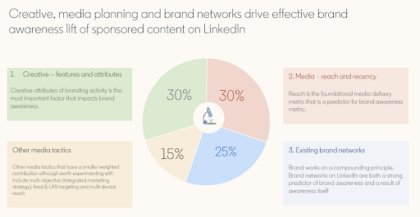 Brand reputation is built up through consistent messaging and content, including testimonials and employee engagement with your pages – because people want to hear from people. LinkedIn’s employee advocacy feature is a great way to boost brand reputation in this sense.
Brand reputation is built up through consistent messaging and content, including testimonials and employee engagement with your pages – because people want to hear from people. LinkedIn’s employee advocacy feature is a great way to boost brand reputation in this sense.
Demand attention through creatives: as dwell time on your creatives increases, positive responses when a viewer is asked the question of whether they’re aware of your brand increases by 1.2x. The optimum dwell time is between 7-15 seconds.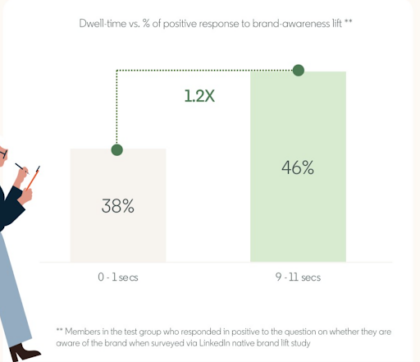
David revealed that brands using video and emotive content in their messaging were seeing exceedingly better levels of engagement and reach than brands who weren’t; video ads increase dwell time by 11% compared to static images. B2B brands need to invest more in these forms of high attention content and work with agencies to produce the best quality creatives that tease out and showcase the distinctive qualities of your brand.
Once you’ve invested in high quality creatives for your content (particularly for video and emotive content), ensure your ads are showing up regularly in feeds, don’t try to tailor your targeting too tightly, and encourage experimentation and test and learn. 5-7 creatives is the optimum number, and on average increases brand awareness lift by 24%.
Good brand reputation eventually equates to revenue; decision makers want reliability and a brand they can clearly trust, they certainly don’t want any doubt that they could be making the wrong decision on behalf of their company.
Key takeaways:
- Invest in high attention creatives for video and emotive content to increase dwell time and impact brand awareness lift.
- Use multiple creatives in ads to connect with different audiences with varied needs; 5-7 is the optimum and on average leads to a 24% increase in brand lift.
- Address audiences’ pain points in a conversational tone – avoid business jargon!
- Reach is foundational to driving awareness – a common downfall is trying to be too tailored in your targeting.
- On average, dwell times of 9-11 seconds see increased positive brand lift of 1.2x – dwell times of 7-15 seconds is the optimum.
- When driving brand awareness, optimising content for views and traffic is a more reliable metric than clicks.
- Try to put your ad in front of people once every week; awareness drops 1.3x over 10 days.
- 12-20 impressions equates to 1.4x uplift.
- Stay always-on by participating in cultural convos & popular topics.
Talk 3: API & measurement features
Senior Customer Solutions Engineer, Solimar Goncalves, and Global Senior Measurement Analytics Partner, Stephen Baretta, discussed how solutions and features supported by LinkedIn’s API can help with reporting and measuring ROI from platform activity.
Return on investment (ROI) is considered the most important metric for most CEOs; LinkedIn’s APIs strive to make reporting on marketing activity smarter so you can more accurately report on the wider impact marketing has on revenue – but it does require you to input pipeline data.
LinkedIn’s Audience Insights, Engagement Insights and Media Planning allow you to marry LinkedIn platform and reach data with data from other platforms, like CRM data and offline data, to better plan campaigns and understand what factors have influenced pipeline and revenue.
The Revenue Attribution Report can sync with CRM systems to show businesses where leads influenced by LinkedIn marketing are converting down the funnel.
LinkedIn’s Website Actions allows you to create custom conversions based on grouped events and to build retargeting audiences based on web behaviour.
Overall the more cross-platform data inputted for the planning of campaigns will help you gain a better picture of ROI using LinkedIn’s measurement solutions.
The shift towards wider picture reporting in the platform comes at a time when 63% of marketers don’t feel confident in their ROI measurements and when 57% of CEOs are prepared to invest more, but less so if ROI isn’t prioritised as a measurement. Many marketers are sitting in this danger zone and need to start pivoting reporting away from solely performance metrics in the platform.
The effectiveness of LinkedIn’s APIs rely on the data you input, so make sure you’re connecting your data to outcomes; purpose built solutions, sales & marketing alignment and both online & offline conversion tracking.
Key takeaways:
- The average B2B sales cycle is 6-9 months, whereas 77% of marketers measure return during 1 month of campaign; sales and marketing need closer alignment for accurate ROI measurement.
- Understand which marketing efforts are creating profitable sales opps.
- Merge data from all platforms for a 360° perspective.
- LinkedIn’s APIs can track any form of influence as a form of return, but how it measures influence is variable to you.
- Conversion API creates a direct connection between marketing data from your server and LinkedIn.
- Mid-November will see the first roll out of CAPI partners.
- Better use of website actions will help inform the middle of funnel activity.
Talk 4: The CMO scorecard
Jennifer Shaw-Sweet, LinkedIn’s B2B Institute Lead (EMEA), discussed the concept of the CMO scorecard. The scorecard is all about linking your brand’s creative and media reach to business outcomes valued by C-Suite members. 89% of B2B marketing leaders recognise that brand building is important – but the difficulty faced in proving the return means it isn’t always reflected in investment.
While a powerful creative has 10-20x times more sales power than a mediocre one, how can you measure its performance to prove this to the C-Suite and link it to the results they care about?
Simply, marketers should score creatives based on 3 key questions:
- Do buyers notice your ads?
- Are your ads attributed to your brand?
- Do your ads link you to buying situations?
If a user isn’t noticing your ads then it’s not going to drive results; test the effectiveness of your ads by measuring attention vs reach. Invest in ads receiving more attention and divest in ads that are not.
Another top tip from Jennifer was to spend evenly throughout the year if you want to increase reach and decrease decay, spending more money at the top of the funnel on brand awareness where cost per reach (CPR) is lower.
Brand awareness unlocks much more long-term value than purely investing in activation. When you’ve built up a reputable brand, it leads to short-term sales, long-term sales, pricing control, competitive moat, category optionality and talent acquisition.
Measure the power of brand awareness using LinkedIn’s tools; increased conversion rates like CTR and lead-gen completion forms after being exposed to a campaign highlight the effectiveness of brand awareness campaigns. You can also measure metrics like the number of connection requests for sales teams and warm member (active follower) hires.
Key takeaways:
- The goal is to generate a memory that people can reach for when they move into the 5% who are ready to buy.
- A powerful creative is 10-20x more sales effective than a mediocre one.
- A good benchmark for testing the effectiveness of ads = attention vs reach.
- Use messaging in ads that shows your buyer how your product meets their needs.
- Clicks, followers and views are metrics that are starting to lose favour with the C-Suite.
- For greater efficiency, spend across all of the funnel equally to minimise CPR.
Talk 5: Creative trends and best practices
Four key design trends for successful brand-building creatives were identified by LinkedIn’s Senior Creative Strategy Consultant, Wensy Antoli: emotion, nostalgia, futurism and authenticity and purpose.
Trend 1: Emotion
- Tech brands with highly emotive content acquired, on average, 1.6x more followers.
- Emotion impacts awareness with a 25% higher engagement rate in emotive content and a 13% higher CTR.
- Emotion elicits action; when writing a post, think about the reaction buttons & how you can drive these emotions.
- Relatability and community is key to success on LinkedIn – build this through memes, local content, and naming your audience.
Trend 2: Nostalgia
- We’re in the middle of a global polycrisis: 83% of people worry about the future and 93% believe things were better in the past.
- Remind users of your brand heritage and legacy through storytelling.
- A case study of two brands, Product School and Koenigsegg Automotive AB, showed how they saw a huge increase in CTR after referencing Star Wars & Stranger Things in their content.
- Fauxstalgia – nostalgia for a period you didn’t experience – is a way brands are leveraging nostalgia to appeal to multi-generational audiences. For example, Gen Z and their love of Stranger Things.
Trend 3: Futurism
- There are over 100k future-based campaigns on LinkedIn.
- AI, VR, Crypo, AR are all common content themes on LinkedIn relating to futurism.
- There’s a dichotomy of colours in futurism-themed content: black for fear, powder blue for hope. A lot of brands have embraced a hopeful theme for the future.
- Retrofuturism – a combination of nostalgia and futurism, has seen a dramatic increase in engagement since March 2023. It’s a particularly popular theme with gamers and sci-fi fans, and is gradually being adopted by the mainstream.
Trend 4: Authenticity and purpose
- 1 in 5 brands have been accused of greenwashing. However, when done right, purpose-led brands grow at twice the rate.
- Communicate about purpose by using the trust triangle: feature hints of authenticity, empathy and logic in your content.
- Authenticity: human, relatable tone of voice and a ‘real life’ aesthetic.
- Empathy: community is key on LinkedIn. Employ community brand action, such as asking customers to ‘tell their own stories’.
- Logic: demonstrate your journey in stats and insights, use an informative and well-evidence tone of voice.
- Actions speak louder than words – this is how companies are measured. Create a sense of materially impactful progress.
- 86% of people 40+ don’t see themselves in ads; 61% experience ageism at an ad agency – make sure you appropriately reflect your audience in ads.
- There’s been a lot of discussion to address gender & racial inequality, but no action on age.
- It’s not just what brands say, but how; utilising UGC into creatives is a great way to do this.
Need a hand with your creating high-quality creatives for your LinkedIn strategy? Or not sure how to align LinkedIn content with your wider business strategy goals? Our experts are here to help.

